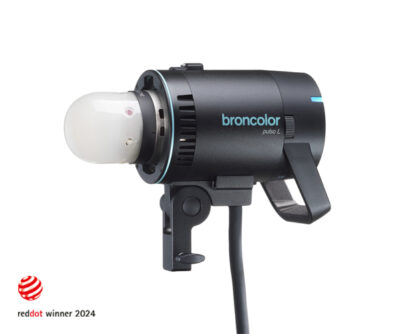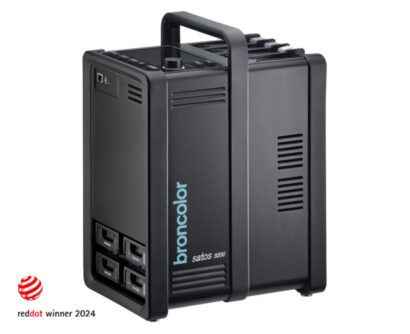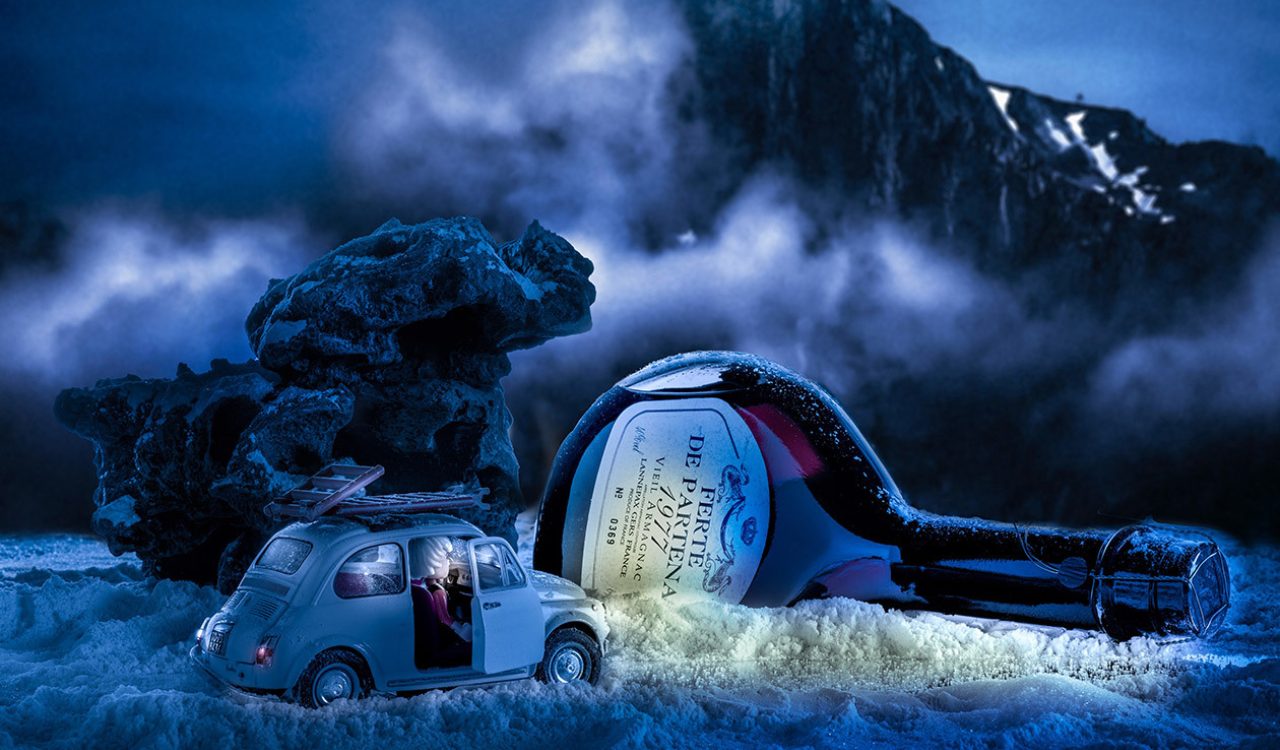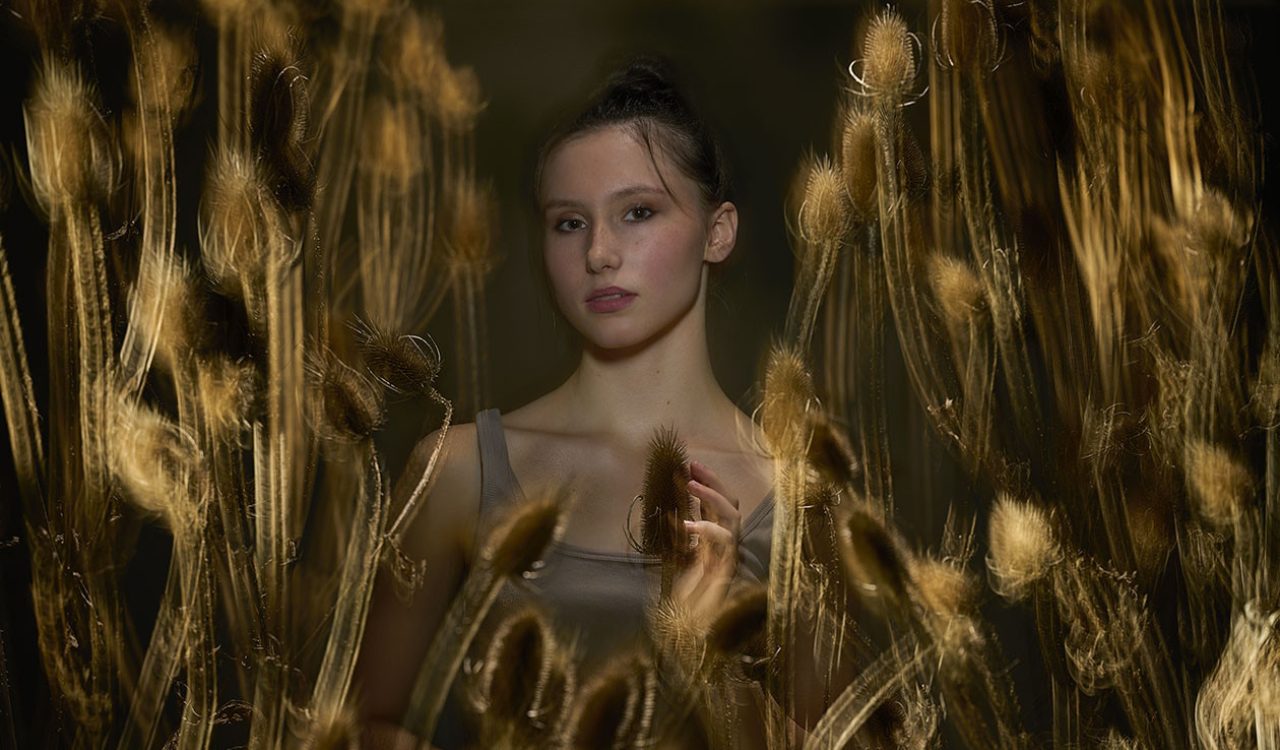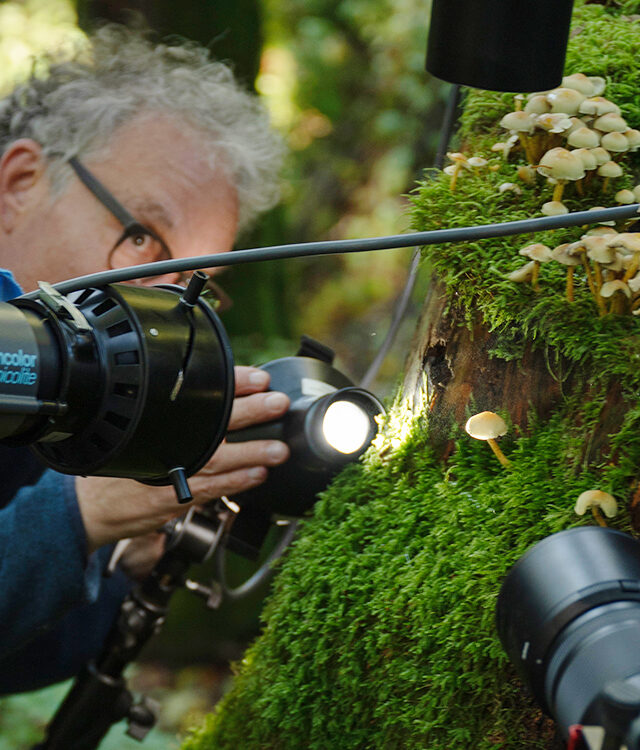The technology used in the new broncolor Satos power packs allows working with a charging time approaching zero – as long as there is a residual voltage of at least 600 volts in the capacitors. With a correspondingly reduced power (+/- 50 joules), this is always the case, as the capacitors are constantly recharged even during a long sequence. We were able to flash 300 times within 10 seconds! However, the higher outputs steadily discharge the capacitors until after a certain number of flashes (depending on power and frequency) first dropouts occur.
Sony (Switzerland) kindly provided us with one of the first cameras of the alpha 9III type, with a global shutter, and we wanted to explore what the currently fastest camera with the currently fastest generator can achieve.
For our planned shooting, we didn't need 300 images; about 20 should be enough. So, we first tested up to which flash power we could work with a frame rate of 30 Hz. To do this, we photographed a white pendulum in front of a black wall and counted the correct exposures before the first dropouts occurred (seen on the left in the following image).
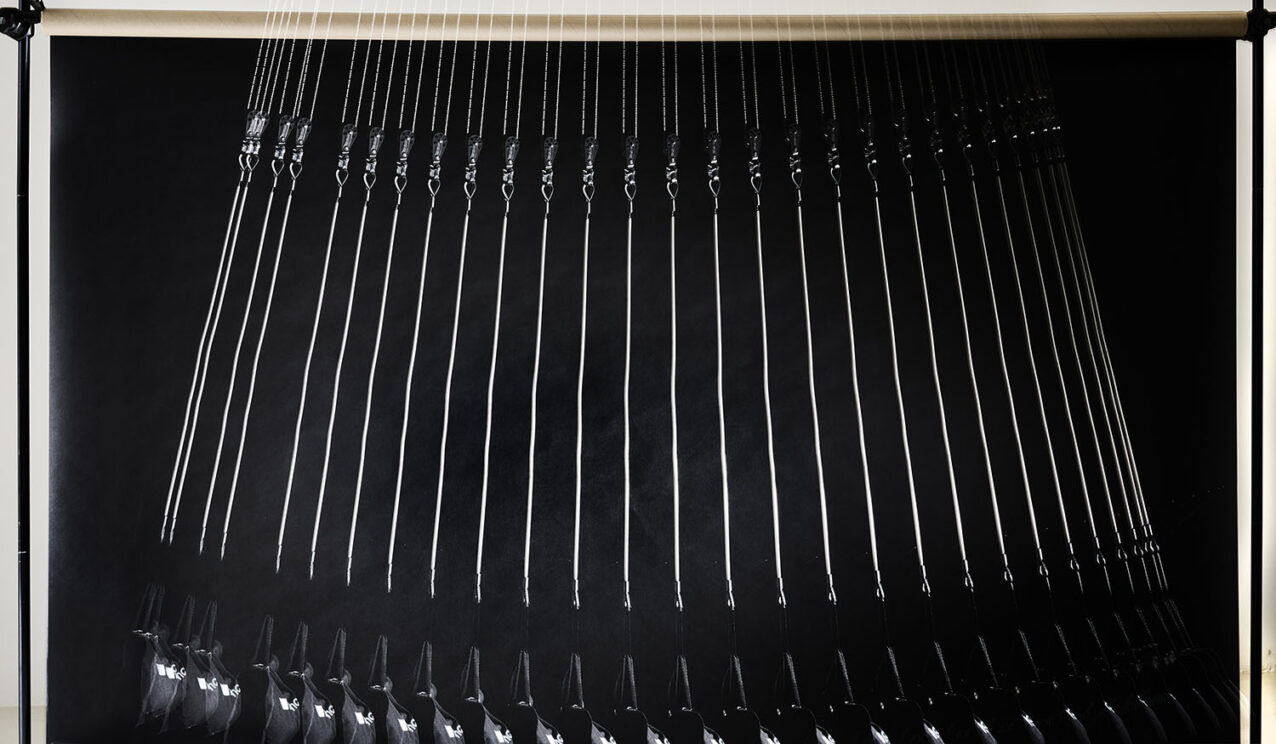
With 24 correct exposures, we had more than enough for our project: throwing an iPhone 14 into a water-filled aquarium. The energy per flash (over 100 joules) was also sufficient to comfortably shoot at even the lowest sensitivity (here ISO 125) with an aperture of 11 – and this at a frame rate of 30 Hz, faster than the usual 24 fps in videos!
Here are the crucial 9 images from a series of a total of 21 exposures:
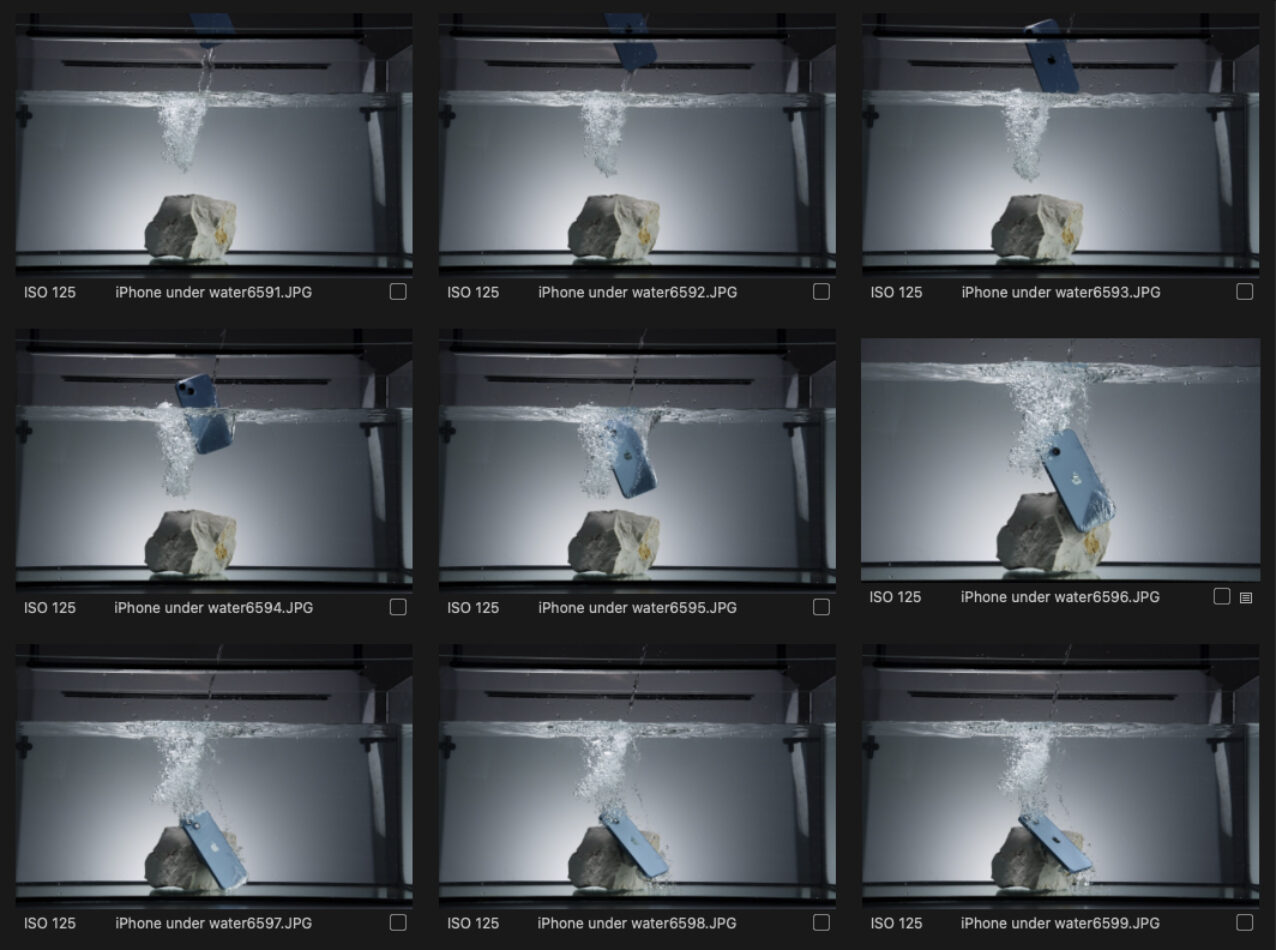
Briefly about the setup: A normal reflector P70 (with a narrow grid) positioned vertically above the stone can be referred to as the main light. At a 90° angle from the right, a small softbox measuring 35x60 cm illuminated the scene. A white acrylic plate served as the background, behind which a light without a light shaper was placed. The distance between this light and the plate defined the concentric brightness gradient.
To get more air bubbles, an assistant poured water into the aquarium with a watering can before the start of the image sequence. Once these bubbles were in the right place, we started the series and dropped the iPhone.
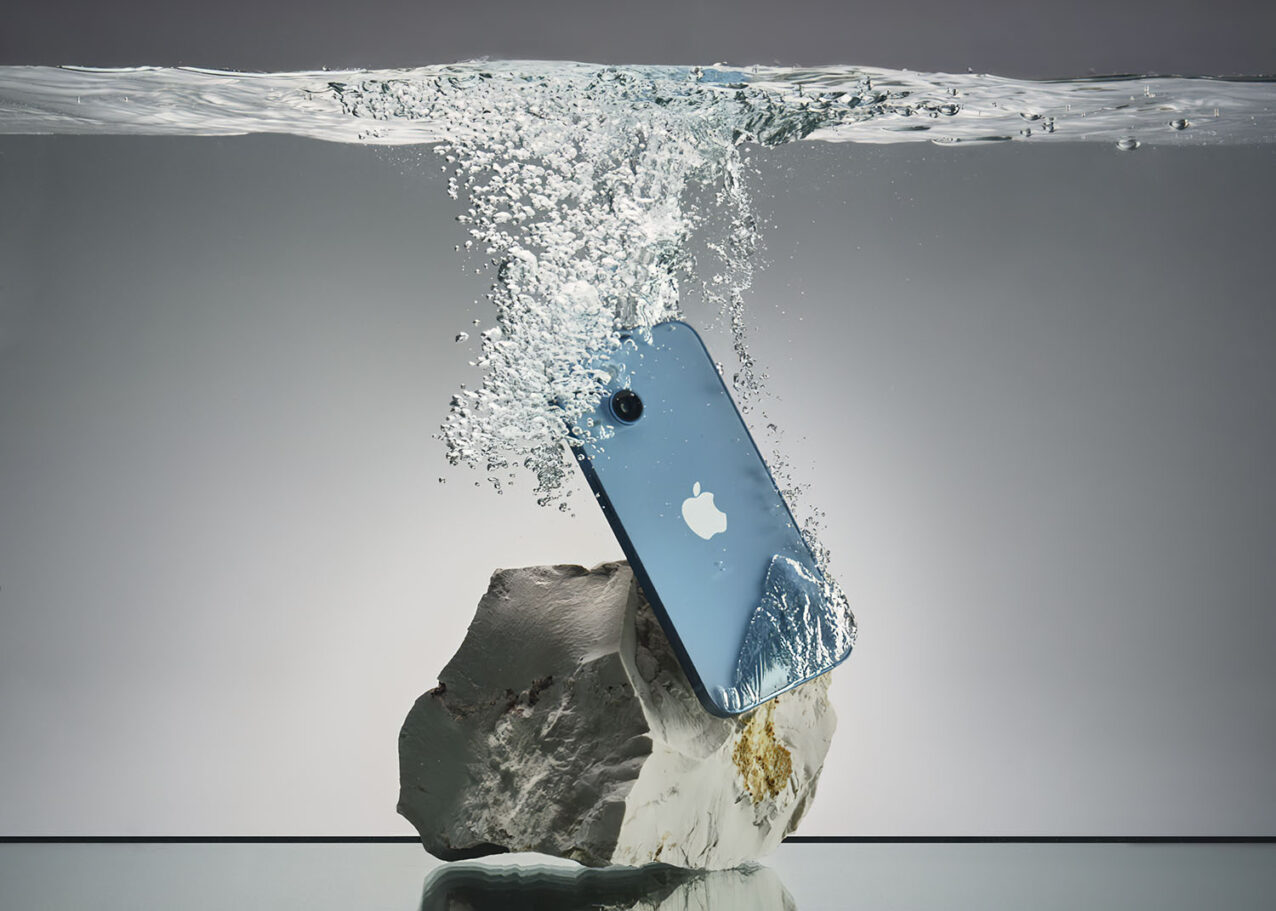
Photographs were taken with a mirrorless full-frame camera at aperture 11 and ISO 125.


